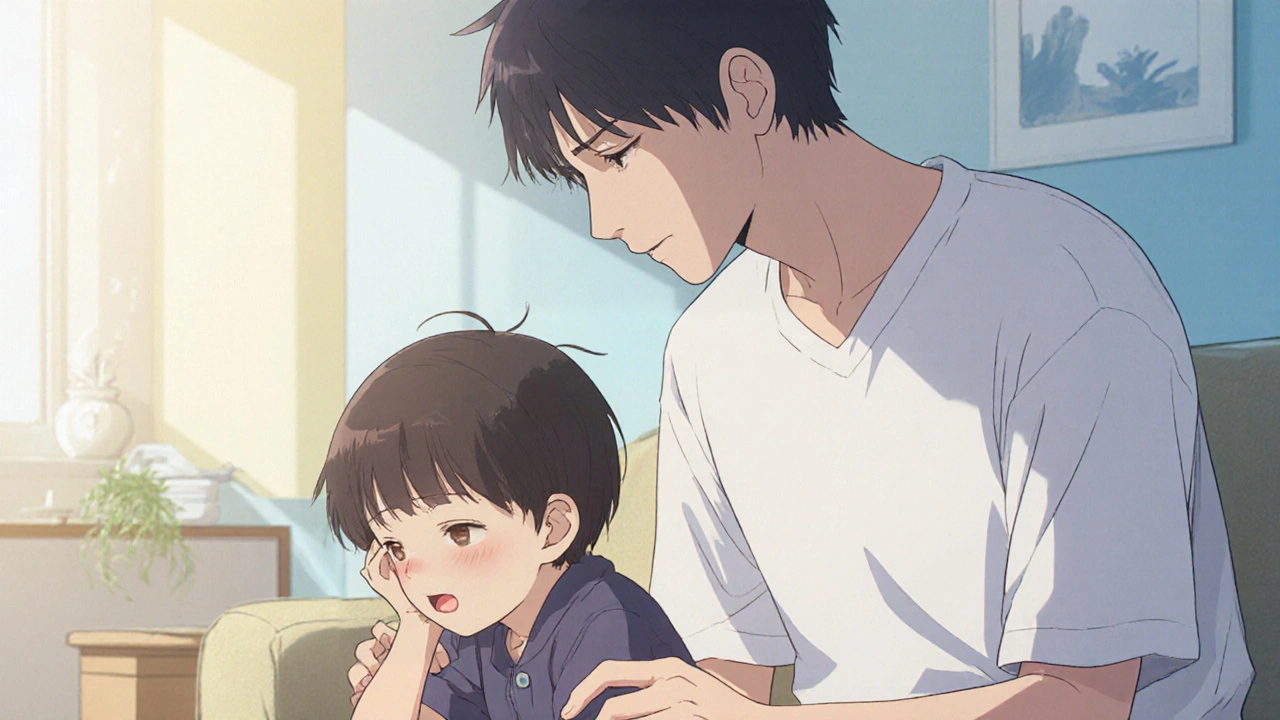When dealing with managing tooth pain in children, the process of easing a child's dental discomfort caused by cavities, gum inflammation, or emerging teeth. Also known as pediatric toothache care, it blends home comfort measures with professional guidance.
Understanding the root cause is the first step. Tooth pain can stem from a decayed molar, a burst abscess, or the natural tooth eruption, the stage when new teeth break through the gums, often triggering swelling and ache. When eruption is the culprit, the pain is usually short‑lived and localized to the gums. If decay or infection is present, the ache persists longer and may radiate to the jaw or ear. Recognizing these patterns lets parents choose the right relief method without over‑medicating.
Safe medication is a cornerstone of relief. Over‑the‑counter options like acetaminophen or ibuprofen work well for most kids, but dosing must match weight and age. Ibuprofen adds an anti‑inflammatory edge, which helps when swelling is the main issue. Always check the label for age limits and avoid giving both drugs simultaneously unless a doctor says so. For children under six months, consult a pediatrician before any pain reliever.
Home remedies can complement meds and often calm minor aches. Cold compresses applied to the cheek for 10‑15 minutes reduce blood flow and numb the area. A dab of clove oil on a cotton swab offers a natural anesthetic thanks to eugenol, but it should be diluted to avoid irritation. Soft, cool foods—yogurt, applesauce, or chilled soup—keep the mouth from aggravating the sore tooth. Encourage gentle brushing with a soft‑bristle toothbrush to remove food particles without hurting the gums.
Professional care becomes crucial when pain lasts more than two days, worsens at night, or is accompanied by fever, swelling, or a bad taste. A pediatric dentist, a dental specialist trained to treat children’s oral health issues in a child‑friendly environment can pinpoint cavities, abscesses, or alignment problems. Early treatment prevents a small infection from turning into a serious dental emergency that might need a root canal or tooth extraction.
Every child’s experience with tooth pain is unique, but the approach follows a clear pattern: identify the cause, apply safe pain relief, use soothing home tricks, and seek a dentist if symptoms linger. Below you’ll find articles that dive deeper into each step— from choosing the right ibuprofen dose to handling a sore‑gummed tooth during the eruption phase. Explore the collection to arm yourself with actionable advice and keep your little one smiling pain‑free.

Learn how to talk to kids about toothaches with age‑appropriate language, coping tips, and when to see a dentist. This guide offers practical steps and comforting conversation tricks for parents.